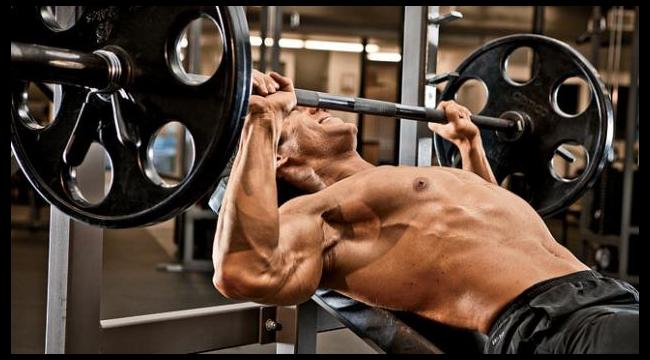We’ve all been asked “how much ya bench?” by a non-trained person about a hundred times in our lives, correct? Perhaps as a result, the chest is the body part that most bodybuilders tackle first when they enter the gym. Many beginner bodybuilders are solely flat bench pressers for the first year or three in the gym, and this is okay for establishing a baseline of muscle for future growth. However, there comes a time for maturing chest training so that a well-balanced chest sits atop your upper body. Here are some tips and tricks to follow for complete chest development.
Get the ratios right
You should be training chest with a 3:1 ratio for the incline:flat pressing movements. In other words, if you complete 9 sets of inline barbell presses and dumbbell flyes, you should be completing 3 sets of flat pressing or flyes. Many bodybuilders – particularly those with the standard Weider flat bench at home – don’t complete any incline bench pressing for their first year or two of training. This creates an aesthetic and strength imbalance which can only be rectified using a 3:1 incline:flat training ratio.
Cable-free
While cable crossovers can provide a great pump and deliver some stimulation to that pectoral-deltoid tie-in, many bodybuilders treat this movement as a mass-gainer. It will deliver a lot of blood to the region and might feel very good, but this movement will not build your pecs in the same manner that flat and incline presses and flyes will. Play with the cables a few times per month, but stick with the heavy compound movements until you have a well-sized chest and are focusing upon shaping it.
Just a little patience
It may seem confusing to train using this wide variety of chest movements when you’re used to just plugging away on the bench press each workout. Deal with it. Your chest is comprised of a vast network of interlocking mesh of muscle sheets. They need to be hit from many different angles in order to stimulate complete growth.
The 20-rep set
At least once per workout, complete a set containing twenty reps. This will stimulate your slow-twitch muscle fibers (those which are only activated by repetition number 12 or 15) and assure you’re stimulating every possible muscle fiber in the chest region. Most of your day should be hard and heavy, but the 20-rep set should always make the trip!
You can have a superb chest routine and follow all the rules, but if you’re not training legs or back, you’re going to develop imbalances which can potentially lead to injuries. Utilize a full-body routine, and don’t skip days. If you have weak body parts, it’s usually because you’re not training legs hard enough.
The chest is the centerpiece in most physiques, the place the judges’ eyes first rest when scanning the stage for competitors. Possessing a well-developed chest is imperative for success at even the local bodybuilding level. Follow this tips and tricks, and train hard and intelligently. A powerful chest will follow!

